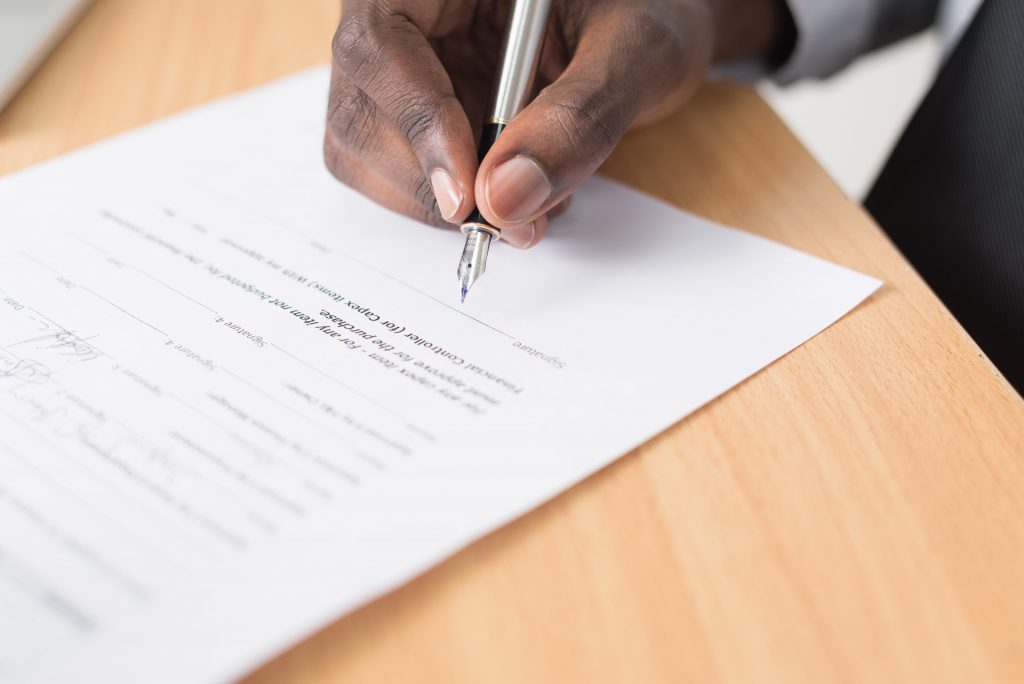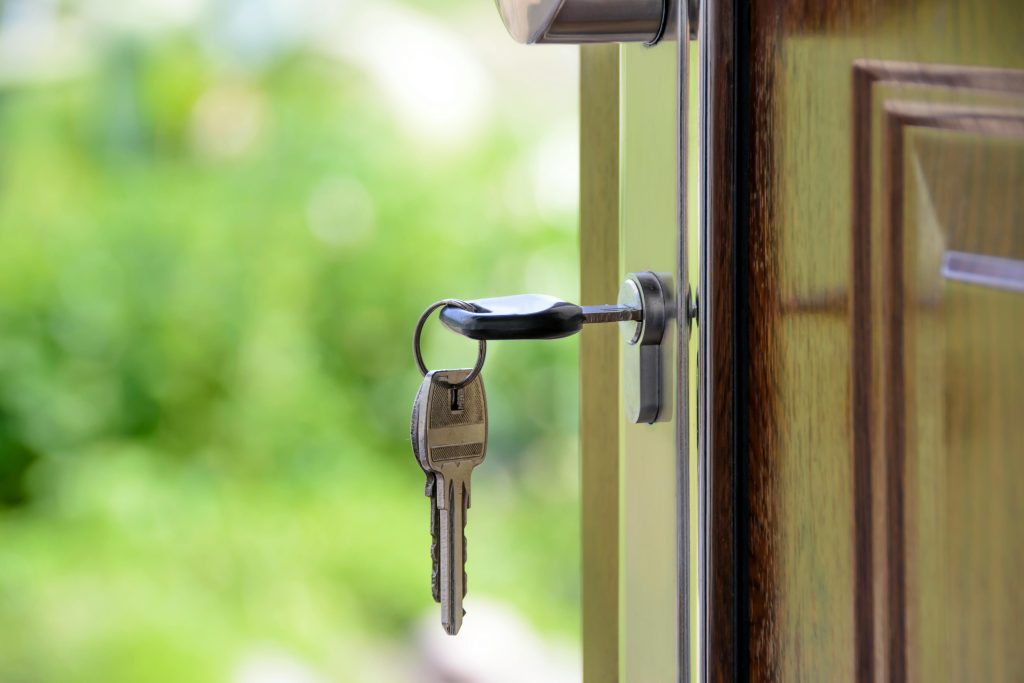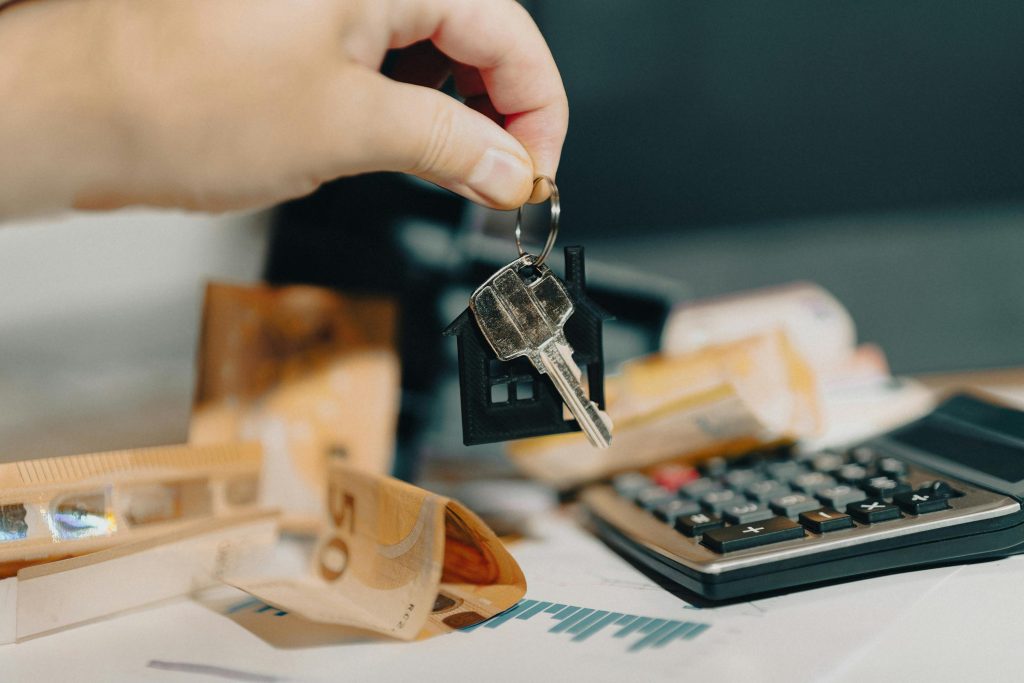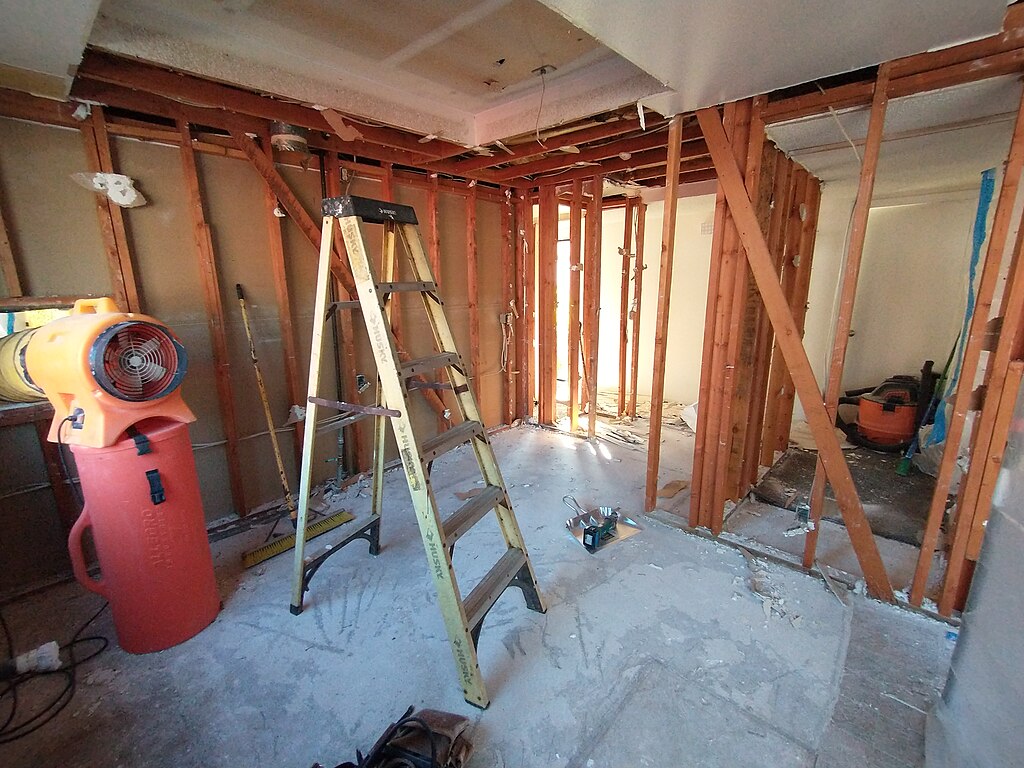Thinking of making a long list of home upgrades before putting your house on the market?
Hold that paintbrush.
Because when it comes to selling your home, doing too much can actually hurt your profit, not help it.
Here’s the thing: some fixes genuinely add value. Others? They eat into your time and budget with little or no return.
Even worse, certain upgrades can actually put buyers off. Especially if they’re too bold, too personal, or too polished. Why? Because buyers want to see potential. Not perfection.
In this guide, you’ll learn:
- Which home improvements are safe to skip (without scaring off buyers)
- What “quick wins” really move the needle on your sale price
- Which big-ticket fixes could lose you thousands
And most importantly, how to get your house ready to sell without throwing money down the drain.
The ROI Mindset: Prioritise What Actually Moves the Needle
When it comes to selling your house, every pound you spend should earn its keep.
That means thinking like an investor, not an interior designer.
Your golden rule:
If you spend £1, make sure it adds at least £2 to your sale price. Anything less is just a vanity project.

The Trap of Over-Capitalisation
Over-capitalisation is what happens when you pour money into renovations that buyers won’t value, or worse, don’t even like.
Say you splash £25K on a bespoke kitchen remodel with quartz counters and brass taps. Lovely. But the buyer’s got their heart set on a rustic shaker style and rips it out.
Wasted cash. Wasted time.
The reality? Most buyers walk into a house expecting to make it their own. So if something feels too “done”, they assume:
“We’ll just change it anyway — so why should we pay a premium for it?”
Big mistake.
We once sold a house that was previously owned by a landscape architect. The garden was designed to a high standard, with a slate patio, a pond with bridge leading to a round lawn area with highly varied perimeter planting which comprised many expensive specimen plants.
The new owner?
Filled in the pond, dug up the plants, and turned it all into a simple lawn.
ROI Rules: What Actually Pays Off?
Here’s what the UK data and real-world experiences tell us:
- Kerb appeal improvements like painting your front door or tidying up the garden, nice flooring: High ROI
- Small cosmetic touch-ups in high-impact areas (like hallway or living room): Medium to high ROI
- Major structural or stylistic changes (loft conversions, rewiring, full remodels): Low or negative ROI
Pro Tip:
Think like a flipper. They don’t throw money at fancy upgrades. They focus on what helps them close a sale fast, for a decent return.
Why Buyers Love Potential (Not Perfect)
Most buyers want a blank canvas they can build on easily and affordably. That means they’re looking for:
- Solid structure
- Safe electrics and plumbing
- Good bones
- Easy to visualise in their own style
Not your taste in tiles.
So rather than upgrading everything to what you think is stylish, focus on what the buyer needs to see working and structurally sound.
Anything more? Let them handle it.
Quick Fixes That Work — And Ones That Backfire
Not all surface-level changes are created equal.
Some cosmetic tweaks are absolute no-brainers. Others? A complete waste of cash.
The trick is knowing which ones actually help your home sell, and which ones buyers see right through.
Let’s break down the big three.
1. Skip the Bold Repaints — Stick to Neutral Touch-Ups
Tempted to give every wall a trendy makeover?
Don’t.
Painting your entire home in bold colours — even if they’re “in” — is one of the most common mistakes sellers make.
Buyers don’t trust strong colour choices. It feels too personal, too permanent. And most will mentally add “repaint whole house” to their to-do list anyway.
What to do instead:
- Touch up scuffs in high-traffic areas — think hallway, lounge, stairs.
- Use timeless neutrals like soft grey, off-white or white.
- Focus on first impressions — freshly painted entryways and living rooms give the biggest lift.
A small tin of paint and a steady hand? That’s value.
A full-on feature wall in forest green? That’s buyer doubt.
2. Don’t Replace All the Flooring — unless its in bad condition
New carpet throughout sounds impressive, right?
Until the buyer says:
“We’re ripping it all out anyway.”
Because here’s the truth: flooring is personal. What you see as an upgrade, buyers might see as dated, cheap or just not their taste.
What to do instead:
- Deep clean existing carpets — steam cleaning goes a long way.
- Replace only if damaged, worn or stained beyond saving.
- Lay stylish rugs to draw attention away from tired patches and highlight key spaces.
Less waste. More charm.
3. Avoid the Over-Staged “Show Home” Look
Ever walked into a house that looks like a furniture catalogue?
Too many props. Too many fake ferns. Too much of everything.
Over-staging makes the home feel staged. And buyers feel like they’re being sold to — not welcomed in.
The better approach:
- Declutter ruthlessly.
- Remove anything too personal (family photos, bold art, kids’ drawings).
- Add a few carefully chosen pieces — like a mirror above the fireplace, a cosy throw on the bed, or a pop of colour in the kitchen.
You’re not creating a showroom. You’re helping buyers picture themselves living there.
Big Jobs You Shouldn’t Take On Before Selling
Thinking about gutting your kitchen or adding that long-awaited loft conversion before listing?
Let me stop you right there.
Some home improvements take months, cost tens of thousands, and still don’t add enough value to cover the spend.
Let’s look at the three biggest offenders.
1. Full Kitchen or Bathroom Remodel? No Thanks
Buyers love a nice kitchen or bathroom. That’s true.
But you know what they don’t love? Paying a premium for someone else’s taste.
A brand new kitchen might cost you £20,000+… and bump up your sale price by just £10,000. Worse still, it can delay your listing by weeks — if not months.
Instead of a full rip-out, try this:
- Re-seal grout and refresh silicone — cheap but instantly cleaner
- Replace old handles or taps — hardware updates modernise fast
- Use a specialist cleaning service to bring shine back to tiles and worktops
- Consider vinyl wraps for cupboard doors as a temporary uplift
Small upgrades, big visual payoff.
2. Don’t Bother With Loft Conversions or Extensions
Planning permission. Building regs. Scaffold. Delays.
Doing a loft conversion or side return just before selling is almost never worth it. These projects are time-intensive, disruptive, and unlikely to complete before your home hits the market.
Even if you pull it off in time, most buyers will think:
“We’d rather do it ourselves, our way.”
Smarter move:
- Get designs done and have them ready to show
- Highlight the property’s potential in your brochure or floor plan
- Mention that it’s “ripe for expansion” or “ideal for extending STPP”
You’re selling the opportunity — not the finished article.
3. Avoid Major Structural Fixes Unless Absolutely Essential
Underpinning. Full rewire. New roof. These are big, messy jobs that can uncover even bigger hidden problems once you start digging.
Start them pre-sale, and you may end up in a renovation spiral that stalls your sale or puts buyers off mid-process.
What to do instead:
- Book a RICS Level 2 Home Survey before listing — it gives buyers peace of mind
- Disclose structural issues upfront, with evidence of quotes or plans
- Offer a slight discount for buyers to handle the work post-sale
You stay in control. They see transparency. Everyone wins.
Garden & Exterior Mistakes That Can Cost You
When buyers rock up to a viewing, the first thing they see isn’t your kitchen — it’s your kerb appeal.
But that doesn’t mean you need to turn your garden into the Chelsea Flower Show.
In fact, overdoing your outdoor space can backfire.
Let’s walk through what to avoid — and what to do instead.
Don’t Splash Out on Expensive Landscaping
It’s tempting to add “wow” factor with a new patio, water feature or topiary maze.
But heavy landscaping projects rarely deliver ROI — and taste varies massively.
What you see as a peaceful Zen pond, a buyer may see as a safety hazard or maintenance headache.
Here’s the better option:
- Pressure-wash your paths and patio — instantly cleaner, brighter space
- Keep the lawn trimmed and borders neat
- Add a couple of planters near the front door for a splash of colour
It’s about tidy and fresh — not high-end and fussy.
Don’t Rip Out Mature Plants
Big mistake.
Mature shrubs and trees can be a real selling point. They provide privacy, texture and a sense of establishment you just don’t get with tiny saplings.
Yet loads of sellers think they’re helping by clearing everything out.
Here’s what to do instead:
- Prune back overgrown areas — but don’t strip the garden bare
- Remove dead plants or weeds
- Use bark or gravel to tidy up empty beds
Let the garden feel loved — but not manicured.
Focus on Your Home’s Approach
Your front door, fence and drive set the tone for everything else.
So instead of sinking thousands into big landscaping works, focus on simple visual upgrades that give buyers confidence before they’ve even stepped inside.
Quick wins:
- Paint or clean the front door — black, navy, or sage green always sell well
- Repair or re-grout paving slabs
- Clear gutters, remove cobwebs and shine up house numbers
First impressions matter — but you don’t need to break the bank to make a good one.
Energy-Efficiency Upgrades That Can Wait
Energy bills are a hot topic — no doubt.
But that doesn’t mean you should race out and invest in solar panels, cavity wall insulation or a new heating system before selling.
Why? Because the payback period on many eco-upgrades stretches years into the future — and most buyers won’t be there long enough to benefit.
Here’s where to draw the line.
Skip the Solar Panels and External Wall Insulation
Not all energy upgrades are equal. If your EPC is below grade C, consider what you can do cheaply to boost it up to a C. A lot of buyers care about EPC ratings. This might involve loft insulation, energy saving bulbs, better seals around windows and doors to stop draft.
However, you’ll want to avoid expensive things like wall insulation, replacing windows, adding solar etc.
Better approach?
- Make sure your Energy Performance Certificate (EPC) is up to date, and grade C or above
- Include any recent improvements like loft insulation or a boiler upgrade
- Mention low-cost wins (e.g. LED bulbs, draught-proofing, TRVs)
That way, you highlight efficiency without sinking cash into hard-to-reclaim upgrades.
DIY Jobs That Can Actually Backfire
Bit handy with a paintbrush? Dabbled in a bit of tiling over the years?
That’s great — but when it comes to pre-sale prep, DIY can often do more harm than good.
Patchy work doesn’t just look bad. It raises red flags during viewings — and bigger ones during surveys.
Let’s break it down.
Avoid Amateur Plastering, Tiling or Joinery
It’s one thing slapping on a bit of emulsion. It’s quite another to attempt:
- Skimming a wall
- Retiling a bathroom
- Replacing skirting boards
- Fitting kitchen units
Buyers will spot it a mile off. And worse? Surveyors definitely will.
That “minor cosmetic touch-up” could now be flagged as a potential issue — slowing down your sale or costing you in renegotiation.
Why Shoddy DIY Creates Bigger Problems
DIY work that isn’t signed off by professionals can lead to:
- Requests for further investigation
- Retention of funds by the buyer’s lender
- Last-minute discounts (aka price chipping)
You’re trying to save £500 by doing it yourself… and end up losing £5,000 off the sale price.
Not worth it.
Know When to Bring in the Pros
Here’s the smarter move: if a fix needs to be done, do it right. That means:
- Qualified trades for electrical, plumbing or roofing work
- TrustMark or NICEIC-certified professionals for anything involving safety
- Invoices and certificates to show buyers everything’s above board
Remember: clean, professional work builds buyer trust, and confidence sells.
Need a short-term fix?
Stick to basic stuff like:
- Tightening door handles
- Touching up paint
- Cleaning grout
- Replacing lightbulbs
Everything else? Leave it to someone with the tools — and the insurance.
The One Thing You Can’t Ignore Before Selling
You can skip new carpets. You can skip a full kitchen refurb.
But there’s one thing every seller must deal with before listing:
Critical safety and compliance issues.
These are the types of problems that don’t just spook buyers — they can halt the sale entirely.
Lenders, Surveyors and Legal Red Tape
Most buyers will need a mortgage.
And guess what lenders want?
Assurance that the property is safe, functional and insurable.
That means if your home has:
- Exposed wires
- Gas appliances without paperwork
- A leaky roof
- Signs of damp or mould
…it’s likely to be flagged in a survey. At best, that delays your sale. At worst, the buyer pulls out altogether.
The Must-Do Compliance Fixes
Before listing your home, check these factors:
Electrical safety
- Make sure the fuse board (consumer unit) is modern and functional
- If in doubt, get an Electrical Installation Condition Report (EICR)
Gas safety
- Book a Gas Safe engineer to issue a CP12 (Landlord Gas Safety Certificate) — even if you’re not a landlord
- Get your boiler serviced and include the receipt in your sale pack
Roof and damp
- Fix any obvious leaks, slipped tiles or blocked gutters
- Treat visible mould or damp patches — and be ready to show receipts
Smoke and CO detectors
- Fit new ones if yours are old or missing. Cheap fix. Big reassurance.
Transparency Wins Trust
Don’t hide issues. Buyers will find them eventually — either through surveys or their own tradespeople.
Instead, own the narrative. Provide:
- Quotes from qualified contractors
- Recent service records
- Reports that show the problem has been resolved (or priced in)
It shows you’re proactive — not evasive. And that makes you the kind of seller buyers want to deal with.
Showcase What You’ve Got — Without Overpromising
Here’s the truth: you don’t need a “perfect” home to get a great offer.
What buyers really want is potential — and a space they can picture themselves in.
Your job? Present your property in the best possible light, without faking it or pretending it’s something it’s not.
Let Professional Photography Do the Heavy Lifting
Smartphones are great — but they’re not enough.
If you want serious buyers to click, book a proper property photographer. A pro knows:
- How to light a room
- Which angles maximise space
- How to make every shot feel inviting, not clinical
And the difference in your Rightmove or Zoopla listing? Night and day.
Pro Tip:
Photos sell the lifestyle, not just the layout. So tidy up, turn on every light, and add a few homely touches (not clutter).
Be Honest in Your TA6 Property Disclosures
Don’t fudge the truth on the legal stuff. It’ll come back to bite.
The TA6 form (Property Information Form) asks about things like:
- Building works
- Neighbour disputes
- Japanese knotweed
- Flood risk
- Damp, leaks, subsidence
Ticking “No” to something you know is true can delay — or derail — your sale later on.
Be upfront. Provide paperwork. And if you’re not sure? Say so, and let the buyer investigate.
Help Buyers Picture the Possibilities
You’re not just selling what’s there — you’re selling what could be.
Buyers need help visualising what a room could become. So include:
- Alternative-use floorplans (e.g. “Bedroom 4/Home Office”)
- Architectural sketches if there’s scope for extension or loft conversion
- Lifestyle cues in staging — like a yoga mat in a spare room or desk in an alcove
Subtle changes can spark big ideas.
Remember: you’re not creating a fantasy. You’re giving them permission to imagine.
Case Study: £2.5K Kitchen Refresh vs £25K Remodel — Who Wins?
Let’s put all this into perspective with a real-world example.
Two sellers. Same postcode. Nearly identical properties.
One chose a light-touch refresh.
The other went all-in on a full kitchen renovation.
Guess who sold faster — and walked away with more in their pocket?
Seller A: The “Full Remodel” Route
- Spent £25,000 on a complete kitchen refit
- New cabinets, appliances, flooring — the works
- Took 8 weeks to complete, delaying the listing
- Chose a bold navy blue and brass scheme
Result?
The house sat on the market for over 8 weeks.
Viewers loved the kitchen — but said things like:
“I’d still want to repaint and change the splashback.”
“It’s a bit too dark for us.”
The feedback? Too specific. Too taste-driven. Too done.
Eventually sold — but had to accept £10,000 under asking.
Seller B: The “Smart Refresh” Approach
- Spent £2,500 on:
- Painting cupboards with high-quality eggshell
- Replacing handles with brushed gold hardware
- Regrouting tiles and polishing worktops
- Deep-cleaning the oven and fridge
- Left layout and units as-is
Result?
Sold in 14 days, with two buyers bidding.
The buyer said:
“The kitchen’s not brand new —
but it’s clean, fresh and we can live with it for a few years.”
And that’s the point.
The Takeaway?
You don’t need to renovate to impress.
You just need to present your home as well-cared for — and give buyers the breathing room to put their own stamp on it.
In most cases, smart cosmetic tweaks = better ROI than full-on renovation.
Why Property Rescue’s “As-Is” Offer Makes Sense
Let’s face it — not everyone has the time, cash or energy to prep their home for market.
Especially if you’re:
- Under time pressure
- Dealing with probate, divorce or financial stress
- Facing a buyer chain that’s dragging its heels
That’s where Property Rescue steps in.
We Buy Houses As-Is — No Fixes Needed
Forget repainting. Forget cleaning the grout.
When you sell to us, you don’t lift a finger. We buy your home exactly as it stands — no staging, no delays, no costly upgrades.
And that means:
- No need to spend thousands upfront
- No risk of overspending on work that buyers won’t value
- No last-minute renegotiations
Zero Fees, Zero Nonsense
Selling through an agent can take months — and that’s before you factor in:
- Estate agent fees
- Solicitor costs
- Survey delays
- Buyer fall-throughs
With us? None of that.
We cover:
- All legal fees
- Survey costs
- Searches
- Transfer admin
There are zero hidden charges — and your offer is backed by real, available funds.
Completion in as Little as 7 Days
Need to move quickly?
We can exchange contracts in 48 hours and complete in as little as a week.
No chain. No faff. No flaky buyers. Just a guaranteed sale, fast.
Here’s the bottom line:
If you want to avoid the stress and upfront costs of a traditional sale — Property Rescue is your shortcut to certainty.
Sell Smart, Skip the Stress
Prepping your house for sale doesn’t have to mean endless weekends of DIY, costly renovations, or second-guessing every design choice.
In fact, the savviest sellers know what not to fix.
They focus on:
- Essential repairs — safety and compliance
- Low-cost touch-ups that boost appeal
- Presenting the potential, not perfection
And they avoid:
- Major overhauls that eat into profit
- DIY disasters that trigger red flags
- Upgrades buyers will likely change anyway
If you’re serious about maximising your profit, ignore personal taste and stick to simplicity
But if you’d rather skip the entire hassle — the staging, the surveys, the viewings, the delays — we’ve got your back.
No stress. No delays. Just a clean, fast, profitable exit.
Ready to sell smart — not spend silly?
Contact Property Rescue today to request your free offer and skip the faff for good.









